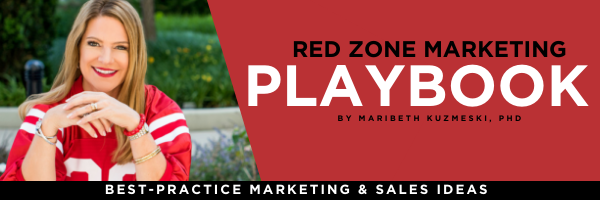As a financial advisor, you know you need to be producing and disseminating original content. You know it not only improves your SEO, but establishes you as an expert in your field and serves as a way to build trust and bond with prospects and clients online. This means you need to conquer content writing!
But, content creation isn’t your forte and the mere thought of writing one article—let alone one article a week—puts a lump in your throat.
“It takes too long.”
“I have no idea what I’m doing.”
“I have a million other things to do!”
I’d be lying if I said I didn’t get it. But, I have found that more than half the problem lies in the unknown.
If writing isn’t in your immediate wheelhouse, the task seems insurmountable—or at the very least, postpone-able—simply because you aren’t sure where to begin.
I’m not going to BS you and tell you it’s easy. But, I can attest that it is markedly less difficult when you follow the tips below!
Structural and Stylistic Content Writing Tips
Like any craft, there is both an art and a science to content writing. The art side is a little more nuanced and may take some practice to refine, but the structural side is more of a “checking the boxes” type exercise and you should catch on rather quickly.
I. The Structural Tips
1) Hook the Reader in the Title
The time has come. This is your chance. Your chance to show the world what you’ve got and reap the benefits of all the hard work you’ve put into your article. But… your title stinks and no one is reading what you wrote.
Titles can make or break engagement levels. It’s just that simple. Titles are the place to grab your reader and pull them in. This often takes creativity, but a little psychology, as well. Here are a few tried and true ways to catch the reader’s attention:
- Create urgency
Ex. How to Transfer Your Appreciated Assets Before It’s Too Late
- List the top # benefits or tips
Ex. Top 10 Tax-Saving Strategies for the Savvy Business Owner
- Use metaphors or similes to add color to the topic
Ex. Navigate Your Refinance like a Ninja
2) Slay SEO
There are a plethora of books available on SEO best practices, but there are a few fundamental rules that advisors should focus on when writing their articles.
- Use Relevant Keywords. Keywords are the beacons in the dark that inform web crawlers what your article is about, and therefore, how it should be classified. Use online tools such as Semrush’s Keyword Magic Tool to find which keywords carry the most weight with your audience. You can also check other advisor websites to see which keywords they are using.
- Place Keywords in titles, subtitles, and in the first and last paragraphs of your article.
- Consider including your location in the first or last paragraph of your article. Of course, this isn’t necessary each and every time, but every once in a while, you may want to pop it in to help boost your local searches. For example, “We serve construction industry professionals in the greater Beverly, Massachusetts area and virtually throughout the country.”
- Insert keywords in the Alt Text of your images when you publish. Web crawlers can’t read images, so insert your keywords into your image’s Alt Text to improve a bot’s understanding of how to classify your piece.
3) Be Mindful of White Space
White space is exactly what it sounds like—it’s the spaces in an article between paragraphs, headings, and images. With too little white space, design elements are all crammed together and give the illusion of a hot mess. Readers rarely stick around to read these types of pieces because unpacking everything feels like too much work. The effort is not worth the reward.
Break up your content and make it digestible. This includes inserting skimmable headlines, writing shorter paragraphs, or utilizing the list format to get your point across.
4) Never (EVER, EVER!) Forget a CTA
What do you do when you want extra low sodium soy sauce included in your DoorDash sushi order? You ask for it!
Copywriting is no different than real life when it comes to getting what you want. You’ve got to ask for it.
Your reader isn’t a mind reader, and your reader is bombarded with content and ads and flashy pictures and videos and shiny lights hours and hours out of every day. It’s exhausting and distracting.
But, you’ve gotten them to come to your site and read your article so you’ve got to strike while the iron is hot. The end of every article should include a Call to Action (CTA) to get the reader to perform the next action you want. This could be “Download Our Retirement Guide” or “Schedule a Call” or “Take Our Retirement Readiness Quiz.”
This is all part of the prospect journey—guiding them where you want them to go. Don’t leave them hanging once they’ve arrived on your virtual doorstep.
II. The Stylistic Tips
5) Write for Your Buyer as You Would for a Friend
Talk to readers the way you would a friend. After all, the goal is to earn trust and build rapport. One way to accomplish this is to use direct address: you, we, and us. This language is inclusive and places the reader in your inner circle. You’ll also want to try and choose active tense over passive tense as much as possible to portray confidence and underscore participation. Take a look at the following example:
Active Voice: “You/We can perform a Roth Conversion to limit your tax burden in retirement.”
Passive Voice: “A Roth Conversion can be performed by investors to limit their tax burden in retirement.”
Not only does the active voice put the reader in control, it helps them to visualize themselves performing a Roth Conversion. The second construction, however, isolates the reader from the action and puts them at a remove from the piece.
6) Remain Readable
A good rule of thumb is to write at an 8th to 12th grade level. This is not to assume your audience cannot understand anything beyond a middle or high school reading level, it’s that they prefer not to read overcomplicated or convoluted text online.
Flow and readability are essential not just for keeping your audience happy, but for Google web crawlers. If the text is too complicated or hard to follow, Google bots will filter your information further from the top in search engine rankings.
7) Limit Jargon. Put it in Layman’s Terms
CPI, RMD, CFP, AGI. Financial terms and acronyms can overwhelm your reader faster than your inappropriate uncle at Christmas dinner. The key here will be to put yourself in your audience’s shoes. If you weren’t a financial professional, would you understand what your article is trying to say?
Here is a simple way to approach it. Rather than concentrate on the minute details of, let’s say, how to perform a Roth conversion, focus on the benefits that conversion will have for your high-net-worth client. That is, focus on how more tax-free income can equal more possibilities in retirement. Stress more travel, more to spoil your grandkids, and more to gift to charity over the nitty gritty as to what percentage of your income should be taxable and tax-free and what the exact drawdowns look like for each. As marketing guru Elmer Wheeler puts it in his bestseller, Tested Sentences that Sell (2008), focus on the sizzle, not the steak.
Improving Your Odds of Success
There is no such thing as “perfect” when it comes to content writing because 100% conversion is unheard of. That’s like saying you’ll hit a home run every time you’re up to bat. But, if you never step up to the plate, if you don’t write and publish copy, you fail every time.
Did you find this information helpful? If so, you’d likely enjoy receiving our Marketing Playbook Newsletter where we include the best practice marketing ideas to help you increase sales. Simply insert your information in the form on this page to join us.



